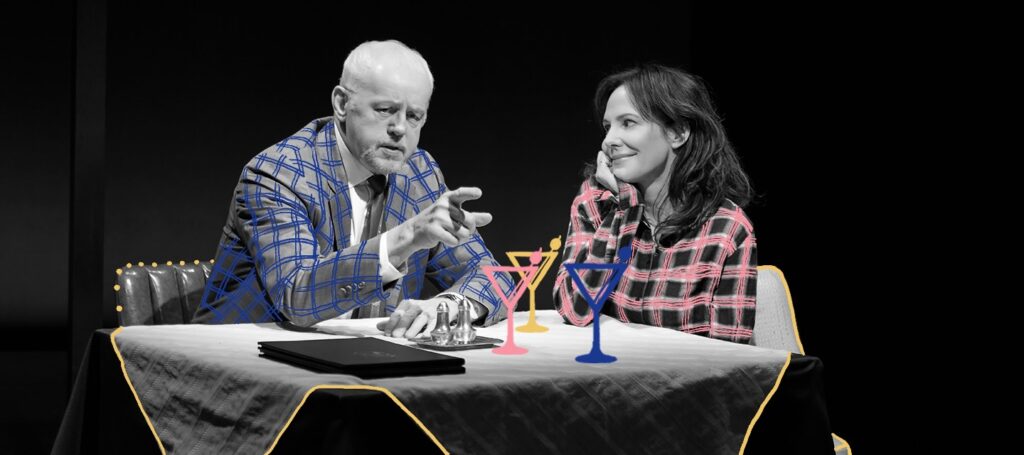


‘How I Learned To Drive’ is a Nuanced Exploration of Memory
As the adage goes, “More Vogel, less Mamet.” Right now on Broadway, this is just beginning to come true, or at least approaching it. Although we have to suffer through both David Mamet’s problematic and dangerous rant about male teachers being pedophiles and a lackluster revival of American Buffalo, we also are graced–thank God–with a long-overdue production of Paula Vogel’s How I Learned To Drive. The play which won the Pulitzer Prize for Drama in 1998 is finally making its Broadway debut, and we are all better off for it.
Written as a reverse-chronological memory play spin on Lolita, but told from the point of view of the female protagonist, the survivor of childhood sexual abuse, How I Learned To Drive is a quintessential feminist intervention: reclaiming and re-centering. Here we get to live within the body and mind of Li’l Bit (Mary-Louise Parker), as she explores, remembers, and relives the trauma of being sexually groomed and abused by her uncle Peck (David Morse) from ages 11 to 18.
The play is increasingly hard to watch. Because the memories go out of order, the true terror and reality of the sexual violence almost sneak up on you, as you realize just how awful it is that Li’l Bit’s uncle, who held her after she was born, begins groping and grooming her. He constantly gets her alone for private conversations, sobriety check-ins, and driving lessons. We see Li’l Bit taking part–what Peck might consider “consenting”–in these activities with painful nuance. Although Li’l Bit is never forced to do any of this, establishes “the line” of what is acceptable to her, and often rebuffs Peck, his emotional grip on her is always clear.
It is a difficult thing to stage the silent act of coercion, the inherent power dynamics of age and family, and to do so with any degree of subtlety, but Vogel does it expertly. Watching the play, you never question why Li’l Bit is seeming to “go along with it,” because Vogel always makes it clear that while there is an illusion of agency, she didn’t really have a choice, it was a culture, a system, a situation, and an abusive relationship that she was raised in and stuck in. As Li’l Bit jokes to the audience in one of her many monologues, “I was sixteen or so before I realized that pedophilia did not mean people who loved to bicycle.”
Mary-Louise Parker gives a masterclass in acting, skillfully capturing the contours of sexual trauma. Parker makes the most slight changes in her voice and physicality to signal the many ages of her character. Parker is an extraordinary actor; there is quite literally nothing I think she couldn’t handle. She won a Tony Award for Best Actress in a Play for last season’s The Sound Inside, and I would not be at all surprised if she wins again this year.
How I Learned to Drive has several major, hard-hitting scenes (all of which reprise moments from Lolita), and Parker handles each one with aplomb: shyness during a kitty porn photoshoot, drunken anxiety at a fancy dinner, stern rejection in a hotel room, and most evocatively, an unforgettable look of extreme pain as she silently remembers the first time Uncle Peck groped her as he taught her to drive at age 11. Vogel has Li’l Bit act out the scene, but has another, much younger actress (Alyssa May Gold) stand to the side of the stage and speak the lines. Eschewing the literal, Li’l Bit remembers, watching the moment over again in her head, confused and horrified, disassociating her body from her mind in order to just survive.
Morse as Peck gives a similarly spot-on performance, finding the perfect balance between his creepiness and the alluring kindness of the character, who frequently comes across as caring and respectful, not forceful (despite the fact that he is at all times silently grooming and coercing). Johanna Day acts as part of the Greek chorus, but most memorably plays Li’l Bit’s mother and Aunt Mary (Uncle Peck’s wife), and delivers several haunting monologues with a delicate touch.
The direction by Mark Brokaw leaves a bit to be desired, and this production is not likely to be considered the most successful staging of this play. Brokaw has the ensemble Greek chorus often act in odd, ghostly and flat ways, as if they are reading stage directions. Likewise, the use of pantomime and minimalistic design (the set, by Rachel Hauck, is mostly screens and some abstract telephone poles) is often inconsistent: sometimes there are chairs around a non-existent table, but in another scene we get a real table; sometimes they mime eating food, in another scene there’s real champagne. This might be an exploration of sensory memory in relation to trauma, but if so, it was unclear and difficult to find the patterns or logic to it.
Though there may be some imperfect elements, it is hard to have anything but praise for this piece. It is clear that the focus was on Parker and Morse’s performances, and they so superbly showcase that this play is a masterpiece. How I Learned to Drive is one of those plays, like Fefu and Her Friends or Cloud Nine, that have been canonized, anthologized, and taught in so many drama classes, but are infrequently produced. I felt blessed and honored to get to see it here in person. In fact, we should all feel fortunate to see Vogel’s ingenious play on stage and to see it so beautifully performed by the divine Mary-Louise Parker. This play is a gift, and we are lucky to receive it. I hope this begins a trend of much more Vogel, indeed.
Keep Reading

In ‘American Buffalo’ Nostalgia Gets in the Way of Progress
Somewhere in America older men impart wisdom to the younger between puffs of smoke and swigs of Coke. Somewhere in America, life is a powder keg with a short fuse, and morality is but an afterthought, as is breakfast. Somewhere in America, everything hinges on a coin. At the center of American Buffalo, David Mamet’s […]
Read More
A Diluted ‘Little Prince’ Leads to Disenchantment
There was a child seated behind me at the Broadway Theatre the evening I attended The Little Prince. The boy was roughly the age I was when I first learned of Antoine de Saint-Exupéry’s exceedingly charming, poignant, heartbreaking tale. The child was getting excited, asking questions, enthralled by the pretty rainbow lights filling the space, […]
Read More












